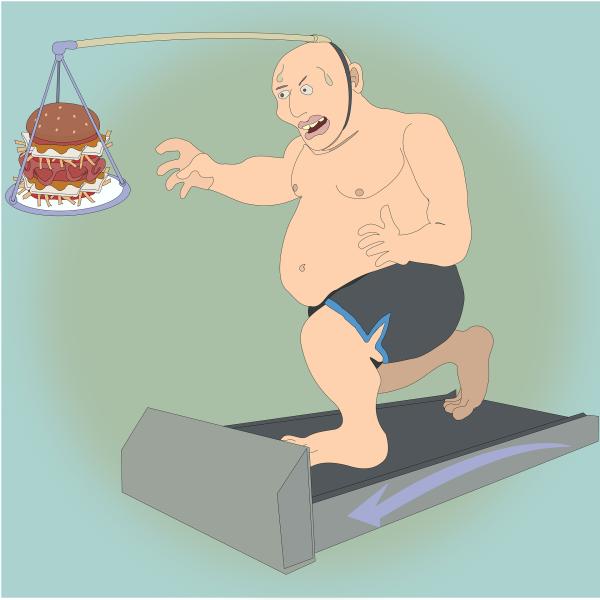Let’s begin with some facts
- Obesity has dramatically increased in the past 40 years, from 30% to 42% of the US population.
- Parallel to the rise in obesity, there have been attempts to shed those pounds – up to 50% of us have tried to lose weight in the last year.
- We have tried exercise (63%), eating less (63%), and eating more fruits, vegetables, and salads (50%)
- On any given day, 1 out of 5 Americans is on some sort of special “weight loss” diet.
We are losing the Battle of the “Bulge.”
I have written previously about those who want to classify obesity as a disease – you can catch up there. Today, we consider the advocates of “being fat doesn’t mean being unfit.” This group wants to shift the focus away from poundage and consider fitness as measured by physical activity or other metrics of cardiorespiratory fitness (CRF). To evaluate the shift, they reviewed studies of the impact of poundage, physical activity, and CRF on reducing our mortality and risks.
What do the studies suggest?
- While there is a general trend for increasing BMI and increasing mortality and risk, there are exceptions, and the correspondence is not 1:1
- Meta-analysis that looked at BMI and CRF together eliminated or greatly reduced the association of weight and mortality. You have to consider the fitness of the individual. If you look at this graph, you
 can see the impact of fitness. In each case, it appears more important than weight. [1]
can see the impact of fitness. In each case, it appears more important than weight. [1] - Muscular fitness, think strength, is associated with a lowered mortality and unrelated to weight – there is some truth to those caricatures of big weightlifters.
- Physical activity seems to reduce the mortality associated with excess weight, but the results are mixed, not in small part because physical activity is rarely measured and most often self-reported. The authors do hold out hope, reporting "even modest amounts of PA are associated with significantly lower CVD risk independent of BMI."
- Observational studies of intentional weight loss showed little improvement in mortality among the unhealthy. Randomized controlled studies showed no significant benefit from intentional weight loss to mortality or risk. You may apply grains of salt as you see fit. Bear in mind that weight loss was usually from diet and exercise, and weight loss itself may be difficult to quantify. Do we measure pounds lost or percentage of weight loss – same numerator, very different denominators.
- Liposuction is probably the easiest means of fat reduction. The few studies reported show no benefit to this form of weight loss.
- Bariatric surgery, the current 500-lb gorilla in the weight-loss room, has decreased mortality and improved metabolism as measured by its impact on fat and glucose metabolism. Much of the metabolic improvement seems to come from the “redesign” of the GI tract, long before the weight loss is apparent. And diminished weight allows these motivated individuals to exercise more – so once again, weight, diet, and exercise remain entangled.
- Increasing physical activity modestly (15-50%) reduces mortality and risk
"In comparison to intentional weight loss, it is evident that the mortality risk reductions associated with increasing PA or CRF are far more consistent and generally of much greater magnitude.”
- Exercise and weight loss both seem to have similar effects in reducing blood pressure, usually by 1 to 5 points. Same for glycemic and lipid control, with improvement in long-term measures of HbA1c and LDLs.
All of these studies have given rise to the fat and fit phenotype – metabolically healthy and obese. The difficulty here, in “following the science,” is that there is no one agreed-upon definition of metabolically “healthy,” and a lack of studies that simultaneously consider BMI, exercise, and other measures of fitness – and even if they exist, how can you expect to isolate the effect of each of these entangled variables?
The authors offer a more “weight-neutral” approach to population health. The goal should not be to reduce weight per se but to improve fitness. They believe the preponderance of evidence favors the goal of increasing physical activity, rather than losing x number of pounds, not an unreasonable conclusion. If this serves as a better or equal motivator, then it is all good. But even the authors recognize that “if” is very uncertain.
From my viewpoint, all of these attempts to find the, or the most, critical, persuasive driver of obesity or exercise are too reductionist. The effect of increased weight upon our day-to-day fitness accumulates slowly; we accommodate. "No sense taking the stairs because it makes me feel funny," another way of saying, "I feel out of breath." A better example: how long do you drive around the parking lot looking for a space closer to the gym entrance?
A laser-like focus on weight without considering fitness is wrong; a laser-like focus on fitness without considering weight is equally incorrect. I am reminded of the Buddhist concept of the middle way, a balance between the ascetic, in this case of exercise, and the sensual, the eating that leads to weight.
[1] There are any number of ways to directly or indirectly measure cardiorespiratory fitness, and all will alter the association/correlation with mortality. I am painting with an admittedly broad brush.
Source: Obesity treatment: Weight loss versus increasing fitness and physical activity for reducing health risks. iScience DOI: 10.1016/j.isci. 2021.102995




